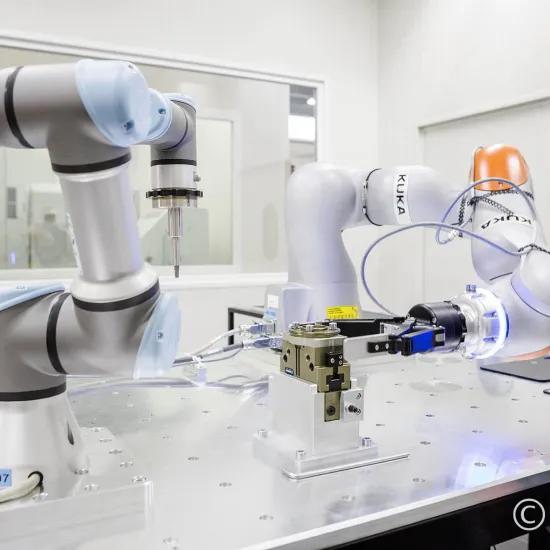A growing market and increased consumer awareness will facilitate the market acceptance of more sustainable and reusable products. But what exactly does bio-based mean and how can these products be identified? Does it make sense to have your newly developed products certified?
Many raw material suppliers, paint manufacturers and end users have included the use of renewable products in their sustainability plan, with specific targets to meet the requirements of the Green Deal and Climate Plan by 2030.
A growing market and increased consumer awareness will facilitate the market acceptance of these products. But what exactly does bio-based mean and how can these products be recognised? Does it make sense to have your newly developed products certified?
Certification, quality seals and labels are important tools to make users aware of the sustainable nature of a product. In relation to bio-based products, the proportion of renewable raw materials and their sustainability can be demonstrated in several ways:
- Bio-based composition (bio-content)
- Material mass balance method
- Life cycle analysis
Below, we take a closer look at these methods, as they are not always easy to interpret or provide a definite answer to the alleged sustainability of a product.
Bio-based composition
The content of renewable materials present in a product can be expressed as bio-content or bio-based content. This content is expressed as a percentage and is often the criterion on which a label or certificate is awarded.
It is therefore very important to understand how the bio-based content is determined and expressed in order to be able to compare different products. After all, there are various ways of representing this content and it will come as no surprise that producers and suppliers often use the method that is most favourable to them.
14C-carbon dating
A commonly used method for determining the percentage of renewable raw materials (% bio-based) is by using a carbon dating or 14C method which checks the (radio)activity of the carbon isotope. This technique allows the quantity of carbon present to be split into a proportion originating from renewable raw materials, such as plants, and a proportion originating from fossil raw materials.
This method is used in both European standards (EN ISO 16640, ISO 16137) and the American standard (ASTM D-6866), although their approach is slightly different.
Bio-based carbon content versus Bio-based content
The method proposed by the US BioPreferred® programme, via the ASTM D6866 standard, defines bio-content as the percentage of organic carbon relative to the total organic carbon present in binders and solvents. Inorganic carbon present in fillers, pigments and additives is not taken into account. The renewable biomass content is expressed as the US bio-based content.
In the European approach, EN 16640, the bio-based content is indicated as the fraction of organic carbon in relation to the total amount of carbon in the sample, including any inorganic carbon.
The two approaches can therefore result in different value for the bio-content of a product depending on the fraction of inorganic carbon.
This would be clearer if the bio-based composition could be expressed as a fraction in relation to the entire (paint) product. This is exactly what has been attempted since 2016 in accordance with directive EN 16785-1, by analysing also hydrogen, oxygen and nitrogen bound to carbon from biomass. This method is much more complex, since a lab has to perform both carbon dating and an element analysis, and is therefore not widely used.
The diagram below provides an overview of the different approaches and thus demonstrates that it is always important to specify the method used to determine the bio-based content.
(Source: Communicating the bio-based content of products in the EU and the US, technical report 2018 by Harmen Willemse)
The overview shows that there are different ways to quantify the amount of renewable material in a paint, coating or ink.
Bio-based labels
Products with a minimum bio-based content of 20 per cent can be tested by certified organisations and recognised by awarding a label. Again, we should note that these are awarded on the basis of bio-based carbon content and also on bio-based content.
TUV Austria (or Vinçotte) uses the 'OK Bio-based' certification programme and uses the bio-based carbon content to assign a label, with the number of stars indicating the fraction in the product, from one star for a fraction of 20-40 percent to four stars if the fraction is higher than 80 percent. It is important to note in relation to this label that the total carbon content of the product must be at least 30 per cent and the carbon content from renewable sources must be at least 20 per cent. Another note is that since January 2020, the OK bio-based certification uses the European standard EN 16640, while products before this date were evaluated using the ASTM standard ASTM D6866. Since the certification is valid for five years, there will be an overlap between products that have been checked in the two ways.
DIN CERTCO can also award a label (valid for 6 years) based on a percentage of bio-based carbon content, determined according to ASTM D6866. Depending on the amount of bio-based carbon content, a label is assigned: 20 – 50 %, 50 – 85 % of > 85 %.
The Dutch bio-based % label, issued by the standards organisation NEN, is based on EN 16785-1 and thus assumes the bio-based content or total biomass. This certification is considered the European certification.
There are also environmental labels, such as the Swiss 'Umwelt label', which uses a classification system to indicate environmentally and health-friendly products or materials, such as wall paints and floor coatings.
Other eco-labels such as the EU Ecolabel, Nordig Ecolabel and Blue Angel include criteria related to minimum bio-based content for awarding the labels for specific products.
What is the use of labels?
The use of a label for a bio-based product is not a requirement, but aims to draw users' attention to the bio-based composition. When awarding a public contract, certification by a label may be recognised as proof of compliance with specific requirements. A label can be used on an end product, such as a paint or coating, but can also be important for unambiguous communication about the origin and composition of raw materials in business-to-business communication.
Mass balance method
Expressing the bio-based (carbon) content in a final product, such as a paint or coating, seems obvious. However, in the marketing of intermediates and chemicals, the renewable character is often expressed differently. For example, by displaying it as the percentage of renewable biomass used for production or as a mass-balance approach. According to this approach, a calculation is made based on the percentage of renewable biomass used in the production process or in making mixtures between products with different bio-content fractions.
The example in the following figure shows that in a production process with different end products, the estimation of the share of bio-based component is calculated based on the initial ratio of fossil raw materials to renewable biomass. The great advantage of this method of calculation is that even the smallest effort in the use of renewable biomass can be directly translated into a 'probable' share in a final product.
(Source : The Bioeconomy consults NNFCC)
Life-cycle analysis
A life cycle analysis is a method of determining the total environmental impact of a product throughout its life cycle, i.e. from the extraction of the necessary raw materials, production, transport, use and disposal. One would expect that this environmental score (LCA score) would automatically be positive for materials produced from renewable sources. However, it is important whether this biomass is obtained from sustainably cultivated crops or sustainably managed forests. Also decisive is the aspect of transport and in particular the distance and weight of transported (intermediate) products. An LCA analysis also takes into account the life span of a product and the extent to which products can be reworked or recycled at the end of their life cycle. Products produced from renewable sources therefore certainly have potential to be used in a circular economy and as more sustainable alternatives, but this should always be (possible to be) checked. LCA studies are carried out according to standardised methods, ISO 14040 and ISO 14004.
Conclusions
The many ways of expressing the renewable or bio-based character of a product, together with the multitude of labels, can cause a great deal of confusion. An end-user should be wary of the 'greenwashing' that many producers are found to apply and should check how renewable biomass has been processed in the product.
The importance of unambiguous quantification and clear regulation and labelling of bio-based products cannot be denied, on the one hand to give consumers the necessary guarantees and on the other hand to accelerate the transition to a bio-based economy.
Coating developers really do want to incorporate the new bio-based raw materials in their coatings, but the start-up is complex, time-consuming and expensive, while the know-how is still missing. The Sirris and Centexbel BioCoat project aims to accelerate the transition to bio-based coatings based on industrially available bio-building blocks by providing coating companies with knowledge about formulation, application, performance and applications. Want to know more about bio-based coatings and paints?Download our free white paper |
Sources
- https://biomarketinsights.com
- https://www.betalabservices.com
- https://www.dincertco.de
- https://www.biobasedcontent.eu
- https://stiftungfarbe.org
- https://www.nnfcc.co.uk
- https://www.nibe.org
(Source picture above: https://nl.dreamstime.com)
]]>









